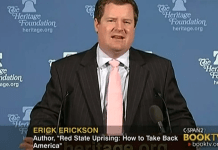Ukraine and Russia, Ukrainian soldiers on the frontlines describe facing relentless and brutal tactics from Russian forces, which they grimly refer to as “meat assaults.” These assaults consist of waves of Russian soldiers launching repeated attacks on Ukrainian defensive positions, often multiple times in a single day. Lt Col Anton Bayev of Ukraine’s Khartia Brigade detailed the intensity of these engagements, noting that these assaults are not just physical battles but also deeply taxing psychologically for Ukrainian troops.
The primary objective behind these “meat assaults,” according to Lt Col Bayev, is for Russian forces to probe Ukrainian defenses, identify their firing positions, and wear down Ukrainian units through constant engagement. The tactic has resulted in staggering casualties among Russian troops since the latest offensive began, with Western officials reporting an average of 1,200 Russian soldiers killed or wounded daily in May and June, marking the highest casualty rate since the start of the conflict.
Drones play a crucial role in spotting incoming waves of attackers, allowing Ukrainian forces to anticipate and counter these assaults. Russian casualties are often left on the battlefield, underscoring the relentless nature of the assaults aimed at overwhelming Ukrainian defenses through sheer numerical advantage.
The strategic use of “meat assaults” highlights Russia’s willingness to leverage its larger population and military resources in the conflict. Reports indicate that some of the soldiers involved in these assaults may include former prisoners or recruits enticed by financial incentives, sometimes amounting to significant sums.
Despite the toll on Russian forces and internal criticism about the handling of wounded soldiers, Moscow continues to sustain its aggressive approach by replenishing frontline troops almost as quickly as they are lost. This tactic underscores Russia’s capacity to maintain pressure on Ukrainian positions, even with troops that may lack adequate training or experience.
Ukraine, however, faces challenges in countering these tactics, not only due to the disparity in manpower but also because of differing approaches toward casualties and military strategy. Criticism within Ukraine has surfaced regarding leadership employing what is perceived as outdated Soviet-style tactics, emphasizing the need for strategic adjustments to effectively defend against Russian advances.
Ukrainian forces have successfully halted Russian advancements, although in eastern Ukraine, Russia’s incremental territorial gains persist. Ukrainian officials express frustration over what they perceive as incremental Western support, which they argue is sufficient to prevent defeat but insufficient to achieve decisive victories against Russian forces.
US military aid has strained Ukrainian defenses, leading to territorial losses and casualties. Ukrainian parliamentary figures, such as Oleksandr Merezhko, chair of the foreign affairs committee, criticize what they see as a cautious approach by Western allies in providing weaponry and support, suggesting a reluctance to escalate the conflict.
The relaxation of restrictions on the use of US weapons across borders into Russia, have bolstered Ukraine’s defenses and contributed to stalling Moscow’s assaults, particularly around Kharkiv. However, Ukrainian leaders stress the critical importance of more robust international support, including the authorization to deploy long-range missiles into Russian territory, to decisively shift the course of the conflict in their favor.
Ukraine continues to defend its sovereignty against Russian aggression, the conflict remains fluid and intensely challenging for both military forces and civilians caught in the crossfire. The evolving dynamics on the ground underscore the high stakes involved and the urgent need for sustained international engagement to stabilize the region and support Ukraine’s efforts to secure its borders and protect its people.























